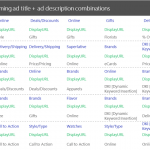advert-blockading report: nearly 200 Million customers, $22 Billion In lost ad earnings
The misplaced ad income figures will double in 2016, says PageFair in the record.

ad-blocking off software, once thought to be a fairly small-scale phenomenon, is it appears unexpectedly going mainstream. in line with a brand new report from Adobe and PageFair — an Irish company based in 2012 that “measure[s] the cost of adblocking and show[s] alternative non-intrusive promotion to adblockers” — $21.8 billion in international advert revenues had been blocked/lost thus far in 2015.
advert blocking has grown from roughly 21 million users in 2009, according to the file, to 198 million lively international customers as of June 2015 (the chart beneath only reflects adoption thru January 2015).

Globally, advert blockading noticed 41 p.c growth 12 months over year. In america, it grew forty eight p.c and now has 45 million energetic customers. in line with comScore, there are approximately 250 million laptop internet customers in america. The Adobe-PageFair knowledge argue that about 18 percent of the usa web inhabitants is blocking ads.
according to estimates within the file, there was $5.eight billion “in blocked earnings” in america in 2014. The number is anticipated to reach $10.7 billion this 12 months and $20.3 billion by means of 2016. The report projects $forty one.4 billion in possible ad earnings blocked subsequent year on a worldwide basis.
Chrome is the browser that has considered the best set up of ad-blocking plug-ins. on the other hand, Firefox and Safari are additionally seeing advert-blocking off increase. The document asserts that ad blockading happens most among the younger, technically savvy and male audiences. to that end, websites that rely on those audiences are seeing probably the most lost revenue from advert blocking off; gaming and social networking are chief amongst them.

greater than ninety eight p.c of ad blockading now happens on the pc. alternatively, ad-blockading extensions currently exist for the cell variations of Chrome and Firefox. in addition, iOS 9 will enable ad-blocking apps. All of this implies that mobile advert blocking will grow in the future, especially as the online advert-blocking population turns into conscious of those cell instruments.
A survey of 400 US users carried out for the file found that among these no longer using advert-blocking software as of late, doable reasons to start out had been: 1) misuse of information for ad personalization; and 2) raise within the amount of advertisements.
overall, these findings argue for extra relevant commercials, more privateness and knowledge use transparency, higher ingenious and total ad quality. Publishers and agencies shouldn’t simply take it as on condition that customers might be accepting of on-line ads. there is something worse than non-consideration: energetic blockading. certainly, if these numbers are accurate, advert blockading represents a big emerging drawback for digital publishers and entrepreneurs.
A caveat concerning the record, alternatively: it’s in PageFair’s pastime to generate problem concerning the dimension and increase of advert blockading. I’m now not suggesting any of the numbers are fabricated. i’m suggesting the company has incentives to current essentially the most aggressive model of the current state of advert blocking the info allow.
Having said that, there’s most likely no query that advert-blockading numbers are rising and that income is being lost subsequently. the entire record is on hand for obtain right here.
(Some images used under license from Shutterstock.com.)
advertising Land – web advertising news, methods & guidelines
(93)















